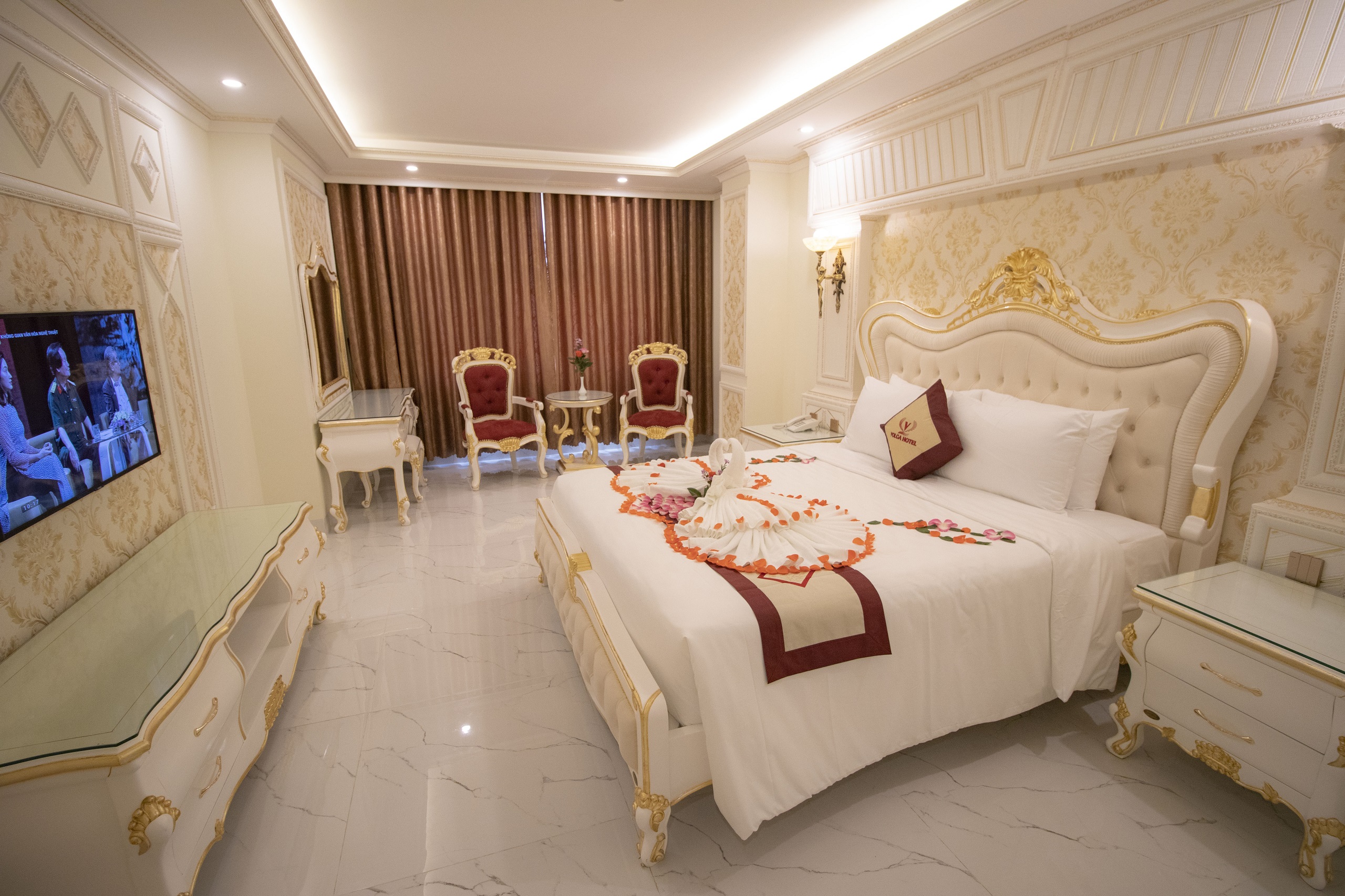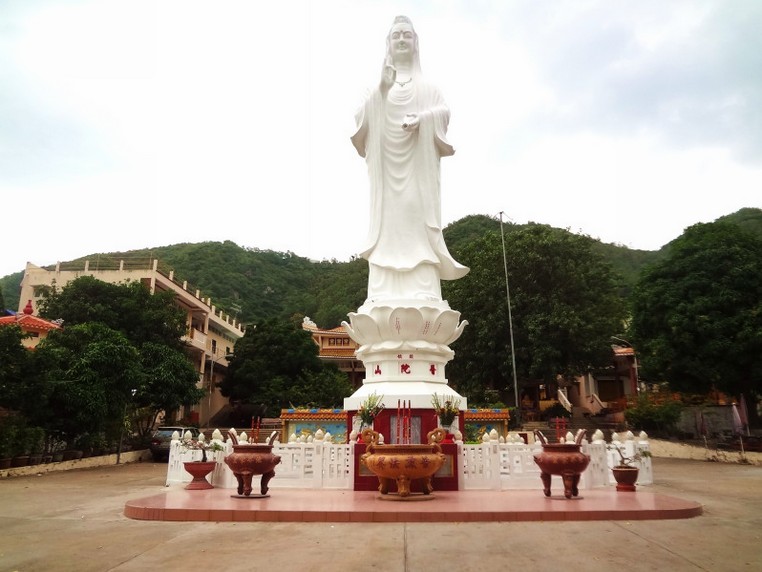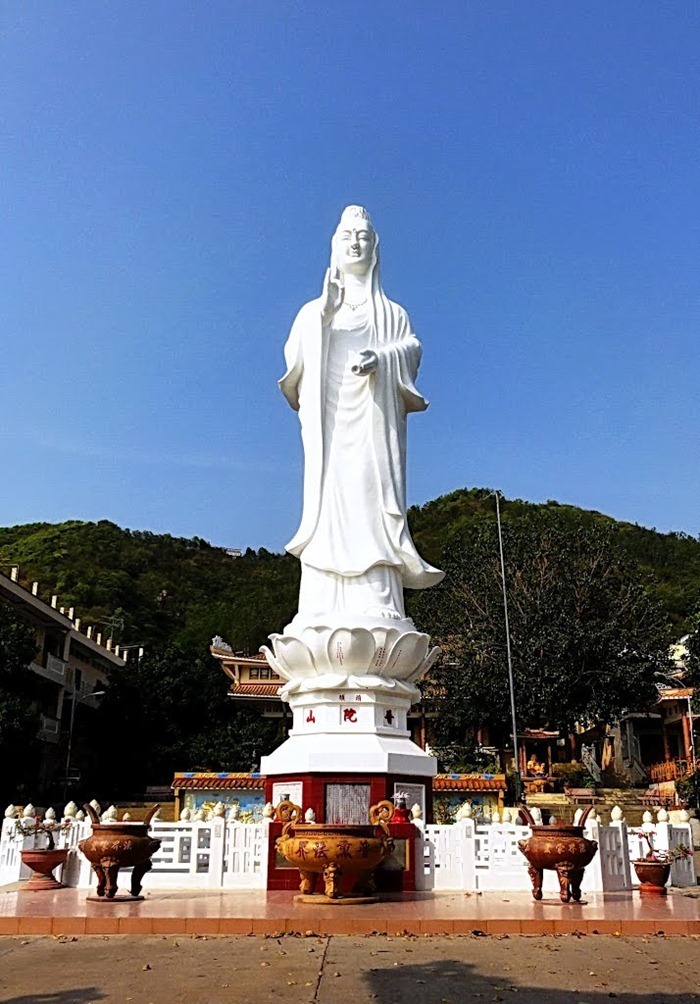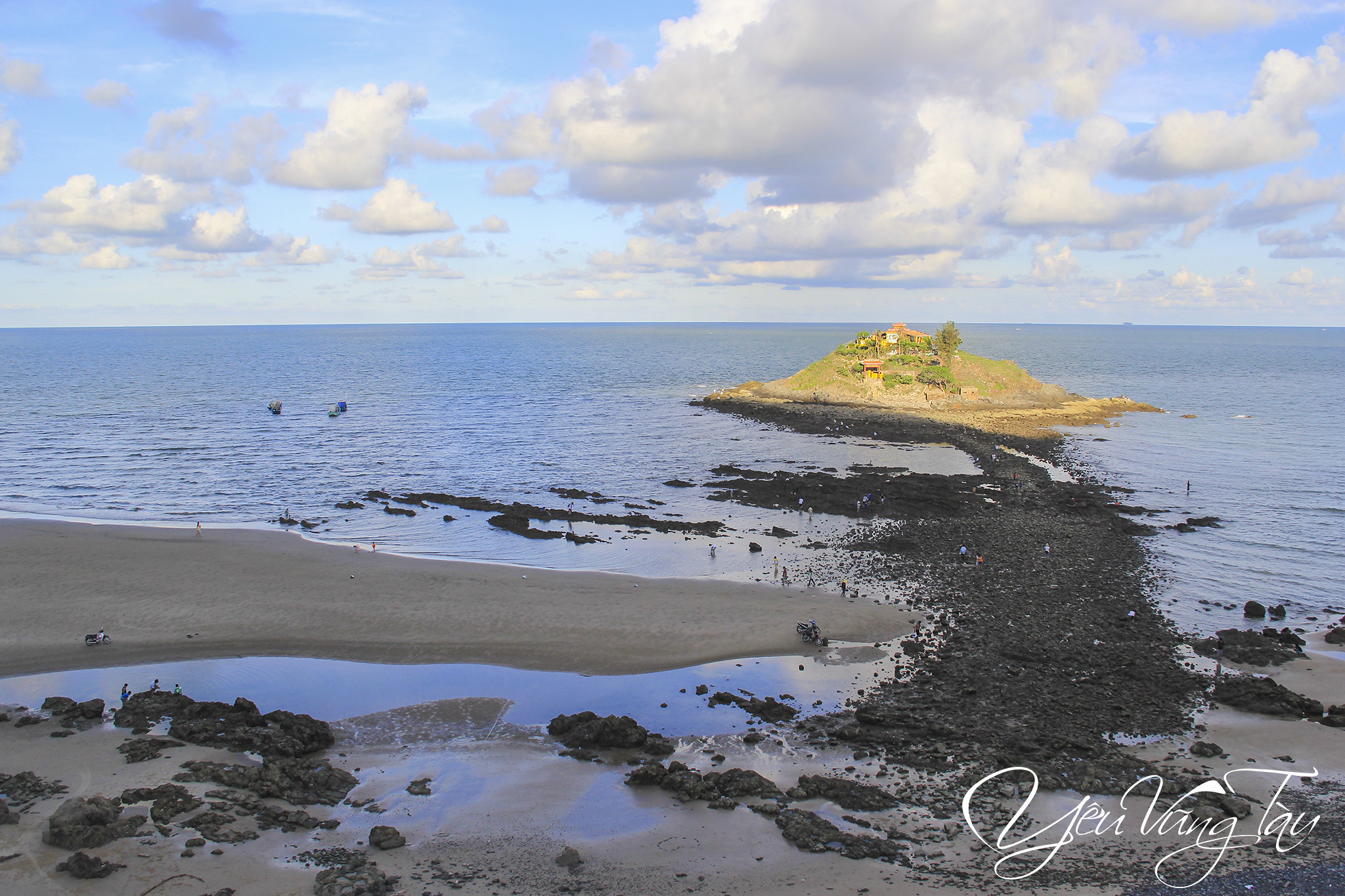Niet Ban Tinh Xa Monastery is located on Ha Long Street, Vung Tau City, approximately 130km from Ho Chi Minh City. It is one of the largest pagodas with modern architectural features.
This monastery was built on a hill from 1969 to 1974. The monastery has a flag pillar, a symbol of an ancient lotus stupa. Among the many items to observe are the 42 stairs paved with bricks, a 3.5-ton bell, intricate mosaic work, and a 12-m Buddha statue.
Situated on the side of Small Mount, Niet Ban Tinh Xa pagoda also called the pagoda of the Lying Buddha, face to the sea at a point about 2 km from the city center.
It was built from 1969 to 1974 completed by the money contributed from Buddhist fellow countrymen. Senior Thich Thien Hue undertook and took care of construction work. It is one of the most charming ones in Vung Tau, with the contour of the modern architecture. In front of the pagoda standing a 12 meters high flagstaff comprising the 42 notches that represent the 42 pages of Buddhist sutras which were firstly introduced into Vietnam since 11th century.
On the top of its gate there is a board with the inscription “Niet Ban Tinh Xa” which means the most elevated place of Buddhism. On the two pillars of the gate are notes regarding the date of the construction, both in the solar calendar (1969) and the Buddhist calendar (2513)
Follow up the stair would take us to the main hall of the temple that is decorated look like a garden of the Sala flowers, the stting of Buddha passing into Nirvana. A salience here is the statue of the lying Buddha, which measures 12 meters in length and it’s represented “The twelve fatal circumstances of human life”. The statue was cast in steel and concrete, coated with those renowned Marbles brought from Ngu Hanh Son in Da Nang province and placed on a 2.5m high pedestal.
In front of the main temple stands a huge ceramic-coated urn bearing the figure of the dragon, kylin, tortoise, and phoenix. This urn had been the achievement of more than two years of engrossing artistic labor of an artisan in Ben Tre province and then offered to the pagoda in 1971
Symmetrically from the two sides of the urn stand tow towers about 2m in height. The one on the left contains a statue of Amida and the other contains a statue of the Buddha of medicine. Behind the sanctum is the inside shrine, a place for the worship of Buddha Sakyamuni and those among his disciple. Right back of Buddha Sakyamuni’s statue who is a picture of “the Great Lama”, the very first eminent monk who brought Buddhism from China to disseminate in Vietnam. Looking to the right one would see the statue of a Buddha with a thousand arms and thousand eyes, which embodies the superb wonderworking power of Buddha who is so insightful and wishes to save all living creatures.
To the left of sanctum lies the stair to the first floor of the pagoda where a large model of the legendary paper boat of Buddha is displayed. The model is 12m long. Buddhism conceives that life is “a sea of sufferings” in which the human race is plunged and Buddhism itself is the paper boat which comes to rescuer every one from misfortunes and take them to the realm of the eternity and infinity. On the other side of the boat is the temple of the Avalokiteshvara Boddhisattwa.
Her statue is wrought in the form of a virtuous and generous lady in the act of pouring down sweet dew from a vase to cure ailments of all living souls and to purify the dusty world. The story of the Avalokiteshvara Boddhisattwa handed down from generation to generation as follows:
In the old days there was as happy young couple in the countryside. The husband named Thien Sy and the wife named Thi Kinh. Thien Sy was so aborbed in his study day and nigh while Thi Kinh was engaged in raising silkworms, planting mulberries to earn a livelihood and also in taking care of him. One day Thien Sy suddenly subsided into sleep while he was studying. At that moment, seeing a tuft of hair was turning weirdly upward on her husband’s chin, Thi Kinh took out a knife intending to cut off the said tuft. All of a sudden he woke up and thought that she was about to kill him because he saw the knife was closed to his throat. For this he gave his wife a good beating and turned her out. Tormented by the injustice that befell her, Thi Kinh had her hair shaven off and disguised herself as a male to seek shelter at a pagoda and became a Buddhist monk (At that time only males were entitled to go to school or to take religious vows).
It so happened that a flirtatious girl named Thi Mau from a well to do family living near by often visited the pagoda to make ceremonial offerings. Thinking that Thi Kinh was a young and handsome novice, Thi Mau usually clanged to the former to court but of no avail. This vexed her a great deal. One day, aware of the pregnancy as the out come of a handy panky illicit relationship with her own servant, Thi Mau came to the pagoda and reported to the resident monk that Thi Kinh was the author of the child unborn. No daring to confess her true identity, Thi Kinh had to swallow the bitter pill and had to take care of the baby when it was born.
The two wrongs of Thi Kinh had been suffering were blent in her prayers and in the sounds of her wooden fish beatings. Then Buddha understood clearly her sorry plight and decided to help her to reach enlightenment in a short time and to pass into Nirvana where she was ordained the title “Avalokiteshvara Boddhisattwa”. And the statue of the child represented Thi Mau’s own child that was nurtured by Thi Kinh.
In front of rescue boat is a belfry about 12m in height. In side the tower a huge bronze bell is suspended. It weighs approximately 3.5 tons and was cast in former Sai Gon (HCMC now) by dexterous artisans from Hue and offered to the pagoda in 1962.
Niet Ban Tinh Xa is both the famous pagoda and scenic beauty site, which attracts hundreds of visitors daily. People come to the pagoda either to make ceremonial offerings or to enjoy the scenery of the place.
Please contact Mr. Tien for Vung Tau City Tours Mobile: +84 918 386 520Email: gm@oilgas.vn
 Với chúng tôi, bạn có thể lựa chọn từ các biệt thự sang trọng, căn hộ thoải mái đến khách sạn đạt chuẩn quốc tế. Nếu bạn muốn trải nghiệm sự riêng tư và không gian rộng lớn, những biệt thự, villa được liên kết bán từ Guest House sẽ là sự lựa chọn hoàn hảo. Với thiết kế sang trọng, nội thất cao cấp và các tiện nghi hiện đại, bạn sẽ có cảm giác như đang ở trong một căn nhà thứ hai. Các biệt thự của chúng tôi thường có khu vườn riêng, hồ bơi và không gian xanh tươi mát để bạn có thể thư giãn và tận hưởng không gian riêng tư.
Với chúng tôi, bạn có thể lựa chọn từ các biệt thự sang trọng, căn hộ thoải mái đến khách sạn đạt chuẩn quốc tế. Nếu bạn muốn trải nghiệm sự riêng tư và không gian rộng lớn, những biệt thự, villa được liên kết bán từ Guest House sẽ là sự lựa chọn hoàn hảo. Với thiết kế sang trọng, nội thất cao cấp và các tiện nghi hiện đại, bạn sẽ có cảm giác như đang ở trong một căn nhà thứ hai. Các biệt thự của chúng tôi thường có khu vườn riêng, hồ bơi và không gian xanh tươi mát để bạn có thể thư giãn và tận hưởng không gian riêng tư.
 Ngoài ra, chúng tôi cũng cung cấp các lựa chọn khách sạn đạt chuẩn quốc tế để đáp ứng mọi nhu cầu lưu trú của bạn. Khách sạn của chúng tôi đáp ứng các tiêu chuẩn cao nhất về dịch vụ, tiện nghi và chất lượng. Với các phòng đẹp và thoải mái, nhà hàng, spa, và các tiện ích khác, bạn sẽ được trải nghiệm sự tiện nghi và thoải mái tối đa trong thời gian lưu trú tại đây.
Ngoài ra, chúng tôi cũng cung cấp các lựa chọn khách sạn đạt chuẩn quốc tế để đáp ứng mọi nhu cầu lưu trú của bạn. Khách sạn của chúng tôi đáp ứng các tiêu chuẩn cao nhất về dịch vụ, tiện nghi và chất lượng. Với các phòng đẹp và thoải mái, nhà hàng, spa, và các tiện ích khác, bạn sẽ được trải nghiệm sự tiện nghi và thoải mái tối đa trong thời gian lưu trú tại đây.





















